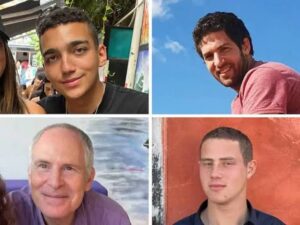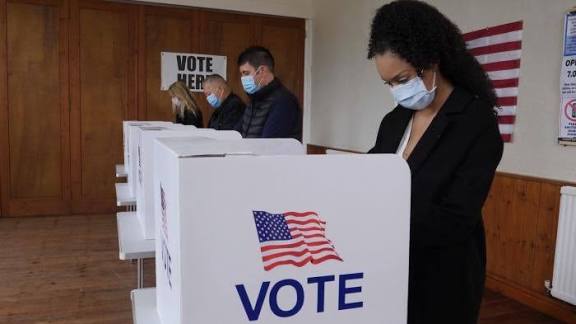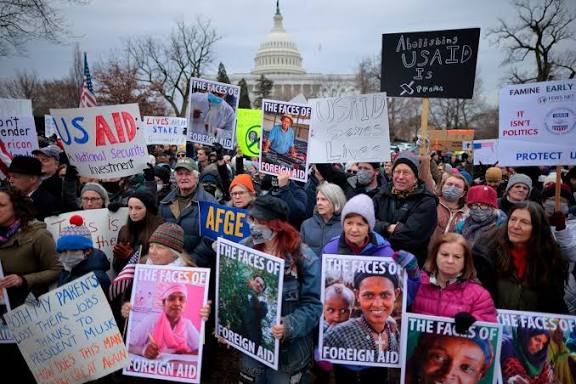Usa hostages in gaza list: Hostages believed to be dead,American Hamas hostage

The Israeli military says the 20 surviving hostages have been released by Hamas and have returned to Israel. Today we will discuss about Usa hostages in gaza list: Hostages believed to be dead,American Hamas hostage
Usa hostages in gaza list: Hostages believed to be dead,American Hamas hostage
The October 7, 2023 Hamas attacks on Israel marked one of the darkest days in modern Middle Eastern history. Hundreds of civilians were massacred, and over 250 people—including foreign nationals—were taken hostage and dragged into Gaza. Among them were several U.S. citizens or dual U.S.-Israeli nationals.
More than two years later, the status of many hostages remains a painful mystery. Some have been rescued or released, others confirmed dead, while a few are still missing with little information available. This article provides a comprehensive, SEO-optimized overview of the American hostages taken to Gaza, those believed to be dead, and the continuing diplomatic and humanitarian efforts to bring closure to their families.
The Gaza Hostage Crisis: A Brief Overview

When Hamas militants crossed into southern Israel on October 7, 2023, they attacked communities, kibbutzim, and a music festival near the Gaza border. Civilians—men, women, children, and the elderly—were targeted in their homes and on the roads.
During the attack, Hamas fighters seized hundreds of people. They were taken across the border into Gaza to be used as bargaining chips in negotiations with Israel and international mediators. The Israel Defense Forces (IDF) confirmed that over 250 individuals were held hostage at the peak of the crisis.
As months passed, a combination of military pressure, international diplomacy, and humanitarian agreements led to partial hostage releases. Some hostages were freed alive during ceasefires; others were confirmed to have died either during captivity or in the initial assault. The challenge for Israel and its allies, particularly the United States, has been not only to free the living but also to recover the remains of the dead.
American Hostages in Gaza: Names and Status
While most hostages taken by Hamas were Israeli citizens, several also held American citizenship. These U.S. nationals or dual citizens have been at the center of extensive diplomatic efforts led by Washington. Below is a list and detailed summary of the known American hostages connected to the Gaza crisis.
1. Edan Alexander
Edan Alexander, a dual U.S.-Israeli citizen, became one of the most recognized faces of the hostage crisis. Born to Israeli parents who later immigrated to New Jersey, Alexander returned to Israel for military service in the IDF.
On October 7, 2023, he was captured by Hamas during the attacks on southern Israel. His family spent nearly 18 months in anguish, hoping for his safe return. In May 2025, after long and difficult negotiations involving Israel, the United States, Egypt, and Qatar, Edan Alexander was finally released. His freedom was a symbolic victory and offered a brief moment of hope to the families of other American hostages still unaccounted for.
2. Hersh Goldberg-Polin
Hersh Goldberg-Polin, another dual U.S.-Israeli national, was abducted from the Re’im Music Festival, the outdoor concert that became one of the deadliest targets of the October 7 assault. Hersh, who held both American and Israeli citizenship, was seen in initial hostage videos with visible injuries.
Tragically, later investigations and intelligence reports confirmed that Goldberg-Polin was executed by Hamas while in captivity. His remains were recovered in August 2024 during an Israeli operation in southern Gaza. The identification of his body brought heartbreak but also closure to his family, who had tirelessly campaigned for his release. His death became a symbol of the human cost of the hostage crisis.
3. Itay Chen
Another American among the hostages was Itay Chen, a young Israeli-American serving in the Israel Defense Forces. He was taken by Hamas during the initial stages of the October 7 attack and believed to have been alive for several days after capture.
However, after months of uncertainty, the Israeli government declared him dead based on intelligence and battlefield evidence. As of October 2025, Chen’s remains have not yet been returned to Israel, and his family continues to advocate for their recovery.
4. Omer Neutra
Omer Neutra, a dual citizen of the United States and Israel, was also serving in the IDF at the time of his capture. His parents, who reside in New York, have been outspoken advocates for hostage recovery efforts, appearing in global forums and meeting U.S. officials, including the President.
In 2024, Israeli authorities confirmed that Omer Neutra had been killed in captivity. Like Itay Chen, his body remains in Gaza. The U.S. government has pledged continued pressure to ensure the return of his remains.
Americans Believed Dead in Gaza
Of the U.S. nationals who were taken hostage, three—Hersh Goldberg-Polin, Itay Chen, and Omer Neutra—are confirmed or believed to be dead.
Hersh Goldberg-Polin: Executed by Hamas and recovered in 2024.
Itay Chen: Declared dead by Israeli authorities; remains unrecovered.
Omer Neutra: Declared dead; remains unrecovered.
In total, two American bodies are still believed to be held in Gaza, awaiting recovery under ceasefire and exchange agreements.
These cases have become symbols of the broader tragedy of the hostage crisis and reminders of the international implications of the Israel-Hamas conflict.
The Hostage and Body Exchange Agreements
Efforts to retrieve both living hostages and the bodies of the deceased have been at the heart of multiple ceasefire and prisoner-swap negotiations.
Under one of the major agreements brokered in 2025:
Hamas committed to releasing 20 living hostages.
The group also agreed to return the bodies of 28 deceased captives.
While the agreement initially sparked hope, its implementation has been inconsistent. Israel has confirmed receiving only a portion of the promised remains. Reports indicate that some of the bodies were difficult to identify, with at least one instance where a returned body did not match any recorded hostage.
Hamas has cited the destruction in Gaza—particularly in tunnel systems and collapsed buildings—as a reason for delays in locating and returning all bodies. Israeli and American officials, however, have accused the group of withholding remains for political leverage.
Challenges in Recovery and Identification
Recovering hostages’ bodies in Gaza poses enormous logistical and humanitarian challenges. The war has devastated much of Gaza’s infrastructure, making safe and precise search operations extremely difficult.
1. Structural Destruction
The widespread bombings have caused tunnels to collapse and buried large areas under debris. Many remains are believed to be trapped beneath rubble or in destroyed tunnel networks that are too dangerous to access.
2. Limited Humanitarian Access
Ongoing military operations restrict movement and coordination for search teams. International organizations often cannot enter areas where remains might be located, and even humanitarian workers face significant risks.
3. Identification Complexities
Even when remains are found, identification requires advanced DNA testing, dental records, and coordination with family databases. In several cases, forensic evidence has been insufficient due to severe decomposition or destruction.
4. Political Manipulation
The return of bodies has become part of the political bargaining process. Hamas has been accused of using the remains as leverage in negotiations with Israel, demanding prisoner releases or ceasefire guarantees in exchange for the return of hostages or their bodies.
The Role of the United States
The U.S. government has played an active role throughout the hostage crisis. American diplomats, intelligence officers, and special envoys have coordinated with Israel, Qatar, and Egypt to secure the release of U.S. nationals and recover the remains of those who perished.
Washington’s commitment to “bring every American home” has been echoed repeatedly in official statements. The U.S. Department of Justice has also filed charges against senior Hamas leaders for the kidnapping and killing of U.S. citizens, signaling a move toward legal accountability on the international stage.
The families of American hostages have met with U.S. presidents, secretaries of state, and members of Congress, demanding continued attention to their cases. Their advocacy has ensured that the plight of American hostages remains a key component of U.S. foreign policy toward Gaza and Hamas.
The Families’ Ongoing Struggle
Behind every name on the hostage list is a family waiting for answers. For American families, the uncertainty is excruciating—especially when the government has declared a loved one dead but their body remains unrecovered.
Parents of Itay Chen and Omer Neutra have launched public campaigns urging both the U.S. and Israeli governments to prioritize the recovery of their sons’ remains. They have attended international forums, spoken before the United Nations, and appealed directly to world leaders to intervene.
The families of hostages often describe a “living nightmare”—caught between grief and hope, unable to fully mourn or move forward. For them, closure can only come with the return of the bodies and a proper burial.
Diplomatic Efforts and Negotiation Obstacles
Negotiations for hostage recovery are deeply complex, involving multiple mediators, political interests, and security concerns. The United States, Egypt, and Qatar have acted as key intermediaries between Israel and Hamas, pushing for sustained ceasefires tied to hostage releases.
However, progress has been slow due to:
Distrust between parties: Israel demands full compliance before new concessions; Hamas accuses Israel of violating terms.
Security conditions: Active combat zones limit safe access to tunnels and potential burial sites.
Verification issues: Disagreements over proof-of-life videos or evidence of death delay the process.
Internal politics: Both Israeli and Hamas factions face domestic pressure, complicating negotiation flexibility.
Despite these obstacles, the hostage issue remains central to all ceasefire discussions. The U.S. continues to link humanitarian aid and diplomatic engagement to measurable progress in recovering both hostages and remains.
The Psychological and Political Impact
The hostage crisis has deeply affected the collective psyche of both Israel and the United States. For Israel, it has reinforced a national trauma rooted in the vulnerability of its citizens. For the U.S., it underscores the global risks faced by American nationals abroad and the limits of diplomatic power in war zones.
The deaths of American hostages have also influenced public opinion, shaping U.S. domestic debates about foreign aid, counterterrorism strategy, and humanitarian involvement in Gaza. Public support for hostage rescue missions remains high, but patience for prolonged negotiations is wearing thin among families and advocacy groups.
Current Status and Outlook
As of October 2025, the situation stands as follows:
All known living American hostages have been released, with Edan Alexander being the last to return home.
Three Americans—Hersh Goldberg-Polin, Itay Chen, and Omer Neutra—are confirmed or believed to have died in captivity.
Two sets of remains are still missing, believed to be inside Gaza.
The U.S. and Israel continue coordinated efforts to recover the bodies through intelligence, diplomatic channels, and forensic cooperation.
While significant progress has been made since 2023, the humanitarian cost remains enormous. For many families, the lack of closure is as painful as the initial abductions.
Conclusion
The story of American hostages in Gaza is one of tragedy, perseverance, and ongoing struggle. From the abduction of young dual citizens to the painstaking diplomatic efforts for their recovery, this crisis reveals both the brutality of modern warfare and the resilience of human hope.
For the United States, the mission is far from over. Bringing home the bodies of the remaining Americans is not only a diplomatic goal but also a moral imperative. For Israel, it remains a matter of national pride and humanitarian duty. And for the families left behind, it is a matter of the heart—a quest for closure, truth, and remembrance.
Until every hostage is accounted for—alive or dead—the crisis will remain an open wound in both nations’ histories.
How useful was this post?
Click on a star to rate it!
Average rating 0 / 5. Vote count: 0
No votes so far! Be the first to rate this post.
About the Author
usa5911.com
Administrator
Hi, I’m Gurdeep Singh, a professional content writer from India with over 3 years of experience in the field. I specialize in covering U.S. politics, delivering timely and engaging content tailored specifically for an American audience. Along with my dedicated team, we track and report on all the latest political trends, news, and in-depth analysis shaping the United States today. Our goal is to provide clear, factual, and compelling content that keeps readers informed and engaged with the ever-changing political landscape.




